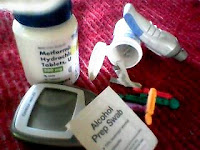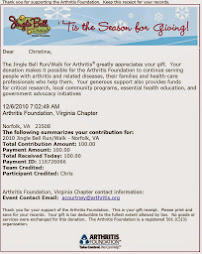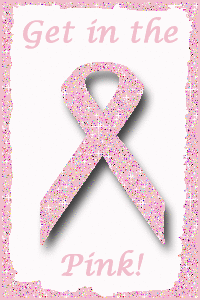I hate dragons. When I started writing this post, I did not know that 2012 was the Chinese "Year of the Dragon." (You can say THAT again.) Truly, I mean no disrespect to people who believe that dragons are a good thing. But, I
hate dragons. The fact is, I've hated dragons since my earliest memory, when the first terrifying encounter happened at about the age of three. I don't know how it found me in my sleep, but I awoke and it was crouching quietly at the foot of the bed, snake-eyes glaring, silvery-green scales reflecting broken rays of moonlight in the dark. Then the darned thing lurched at me, clawing, scraping the skin right off my legs. So it was, with my last post at the end of 2011, when my dragon came back to visit. It stole my pen, it seems, as I found it very difficult to write anything remotely inspiring. But, worse, it managed to
steal my shoes.
This dragon was persistent. It stalked me at every turn for over a year, closer to two years, spewing embers on the path beneath my feet. There was constant anxiety related to my tiny little
grandson's illness. And, there was guilt, profound guilt, at being located too far from his parents (my son and his wife) to help them in a significant way. Then, my husband underwent an extended hospitalization. We fell on hard times and came treacherously close to losing our home. Also, in November of 2011, my children's father, my first husband of twenty-five years, died suddenly. Aside from my own grief (and yes, people do grieve over former spouses), I felt entirely helpless to comfort my own children as they worked through the immense pain of that tragedy. Eventually, I also began to feel ill, but the source of my discomfort eluded me. And, as often is the case for people, the most miniscule event in comparison to all else was the one that precipitated surrender -- an injury to my left knee. Running, the coping mechanism that works best for me, became impossible when I fell UP a concrete step and popped my knee cap into a place it didn't belong. As I wallowed there on the steps, cradling my painful knee, the dragon snatched the shoes right off my feet.
Months and months passed. That scaly, overgrown lizard situated itself right in front of me, snorting, snickering, blowing its repulsive breath in my face. It teased me, trophying my tattered shoes just out of my reach. Despite rest, ice, compression and elevation (RICE), despite muscle strengthening designed to re-align the knee cap, it simply didn't heal well enough to get back on the road. I meandered aimlessly and shoeless, burying myself in what I had decided were well-deserved doses of pity and skepticism. Lurking, laughing, the dragon gloated over my pitiful mindset.
It didn't try to eat me or slay me; no, this dragon was very cunning. Instead, it cast a spell, transforming me into one of its own. Two of my toes started pinching up into sharp points at the center of the nail bed -- like a dragon's claw, it seemed to me. My skin began to turn scaly and coarse. My eyes were so dry, it felt as if the pupils were trying to morph into snake-like vertical slits. I thought I might actually breathe fire from being parched all the time, and I'd gulp water in huge quantities, in futile attempts to quench the heat. I experienced fleeting episodes of pressure in my chest, overwhelming fatigue, tingling in my legs, and a laundry list of other complaints, all too vague in my mind to discuss with my doctor. Besides, how in the world would I ever explain the dragon?
But, on February 10, 2013, my nemesis grew impatient with my gradual transformation. The dragon drew its sword and stabbed at me, right at the middle of my chest. I resisted, kicking and screaming, flailing at it with my fists, poking at those hideous, glowing snake eyes. I beat the nasty thing into retreat, and when I did, I had managed to survive a real-life "widow-maker" of a heart attack, coupled with a new diagnosis of type II diabetes. (The diabetes, it turns out, was a more formidable opponent than any dragon, and the cause of all those dragon-like symptoms.)
Now, when one so regularly attracts a dragon's fury and lives to tell the tale, there is cause for self-examination -- lots of it. Which brings me to the belly of this blog; that is, to tell the stories of ordinary people who face adversity with courage and grace. Battling my dragon has forced me to admit that I have never been guilty of handling adversity with grace -- not once, not even for a second. Although I
imagine myself being graceful on those occasions, I rarely seem to pull it off. And, that's exactly why I started this blog in the first place. I hoped to observe the courageous examples of others who achieve what I cannot, to learn from them, to honor them, and to attempt to retrace their footsteps. What I have failed to recognize in this effort is that a number of such people in my life, siblings, children, cousins, friends -- people whom I have known and loved for many years, have shoes that are worth borrowing. The dragon has been tamed for now, and as Noela Evans observed, it left behind a gift. The gift is the recognition that it isn't necessary to search across the globe for extraordinary examples of character and principle. Instead, those examples have been with me all along, marked by the shoe prints of people whom I know and love, whose remarkable stories are worth the telling.
So, as I used to say in the days before the dragon, "Here's to the next mile!" I'll be traveling now, trying out shoes from the dragon's gift. Hmmm...which pair to choose?
 Equipped only with an inexpensive cell phone camera and my own lack of ability as a photographer, I made an effort to keep the reflections of the morning sun at bay. Admittedly, the resulting image was very bad. I even managed to capture a bit of my own socked foot in the upper right corner. But, I needed that photograph. It was my one good thing for the day.
Equipped only with an inexpensive cell phone camera and my own lack of ability as a photographer, I made an effort to keep the reflections of the morning sun at bay. Admittedly, the resulting image was very bad. I even managed to capture a bit of my own socked foot in the upper right corner. But, I needed that photograph. It was my one good thing for the day.






.bmp)










